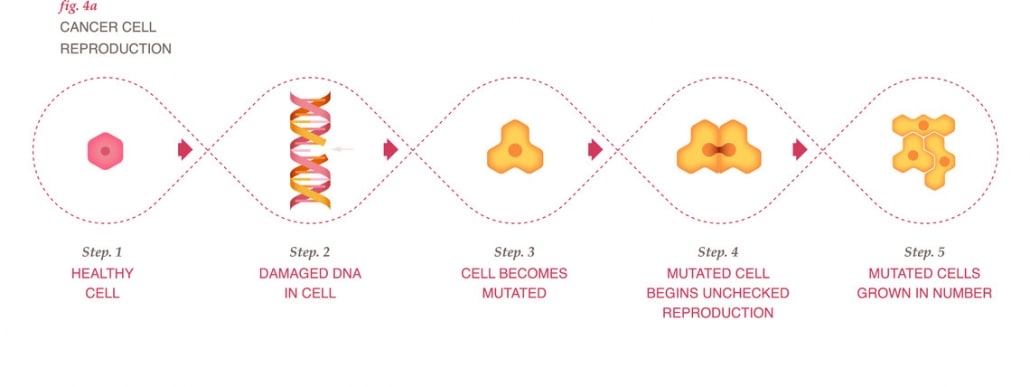Shining the Light on Breast Cancer Awareness Month
By: Angela Easterday, WHNP and Amanda Ruby, WHNP
October is National Breast Cancer Awareness Month. There are many events nationwide that promote awareness such as walks, runs and lighting landmark buildings in pink. It’s also very common to see sports teams, especially NFL teams, sporting pink somewhere on their uniforms, usually in the form of a pink ribbon. All these events are done to raise funds for research, cause, prevention, treatment and cures for breast cancer.
So how did it all begin?
Prior to the 1950s and 1960s discussing any cancer, let alone breast cancer, was extremely taboo in society. In 1974, new First Lady Betty Ford was encouraged by a friend to have a breast exam. The doctor found a lump in her right breast. Two days after, Betty had a mastectomy where the surgeons removed her entire breast, pectoral muscles and the lymph nodes under her right arm (A Leading Lady). What she did next, changed history. During her recovery, Betty gave interviews and allowed the media to take pictures of her while she was in the hospital. Her openness and honesty ended the silence around breast cancer. Because of her story, the number of women receiving breast exams and sharing their stories dramatically increased. Betty was honored with an award by the American Cancer Society (ACS) one year after her diagnosis. She went on to become a spokesperson for the ACS and advocated for early detection and screening.
In October 1985, National Breast Cancer Awareness Month became official. It was a collaborative effort between the American Cancer Society and the former Imperial Chemical Industries, now AstraZeneca (A Brief History of Breast Cancer Awareness Month). Their goal from the beginning was to promote mammography as the most effective weapon to fight against breast cancer.
What exactly is breast cancer?
Breast cancer is a type of cancer that starts in the breast tissue – most commonly from the inner lining of the milk ducts. The cancer begins in the cells, the basic building blocks that make up tissue in the body. Sometimes new cells are formed when the body doesn’t need them, and old or damaged cells do not die as they should (The Breast Health Guide). When this happens, the build up of cells usually forms a mass of tissue – a lump, growth or tumor. These masses can either be malignant, meaning they are cancerous, or they can be benign, meaning they are non-cancerous.

Cancer Cell Reproduction – Photo credit: National Breast Cancer Foundation
Like other cancers, breast cancer has different stages that show how far the cancer has progressed. Knowing the stage of the cancer also lets the healthcare team know which form of treatment to use. The stages are as follows (Breast Cancer Stages):
Stage 0: This stage describes non-invasive breast cancers, meaning that the cancer cells are not spreading into other surrounding tissues or parts of the body or into the lymph nodes. This is the most contained stage of breast cancer.
Stage I: At this stage, the cancer has just spread to surrounding breast tissue, but no lymph nodes are involved. The tumor measures up to two centimeters, or if it is groups of cancer cells rather than a tumor, they will measure between .2 millimeter and two millimeters.
Stage II: This is still an early stage, but the cancer has begun to grow or spread. The tumor measures between two to five centimeters, or the cancer has spread to the lymph nodes under the arm on the same side as the breast cancer.
Stage III: The tumor in the breast is more than two inches in diameter across and the cancer is extensive in the underarm lymph nodes or has spread to other lymph nodes or tissues near the breast.
Stage IV: In stage IV, the cancer has spread beyond the breast, underarm and internal mammary lymph nodes to other parts of the body near to or distant from the breast.
Are there warning signs with breast cancer?
There are multiple signs that a person may have breast cancer. Often, most people who have symptoms will notice one or two. These signs and symptoms include, but aren’t limited to:
1. A change in how the breast or nipple feels, such as:
a. Tenderness in the nipple, a lump or thickening in or around the breast and/or underarm area
b. The texture of the skin may change or the pores of the skin on the breast will enlarge (similar to an orange peel texture)
c. A lump in the breast
2. A change in the breast or nipple appearance, for example:
a. Unexplained changes in the size or shape of the breast
b. Dimpling anywhere on the breast
c. The nipple is turned slightly inward or inverted
d. The skin of the breast, areola (the darker skin area around the nipple) or nipple becomes scaly, red or swollen
3. Nipple discharge, particularly clear or bloody discharge.
It should be said, that just because some of these symptoms may be present, it doesn’t mean that the diagnosis is breast cancer. Any of these symptoms should be evaluated by a healthcare provider.
Early detection is key!
Clinical breast exams are a simple way to take action. These exams are done by a family physician or gynecologist during an annual exam. During the exam, the healthcare professional will do a visual check of the skin and tissue. They will look for any differences in size or shape and check the skin for rashes or dimpling. They will also feel the breasts, underarms and collarbone area to check for any lumps. Mammograms are another screening tool that help detect signs of breast cancer early on. It’s an x-ray that looks at the breast tissue for any suspicious areas. Mammograms can show potential lumps before they can even be felt. Women should begin getting mammograms yearly by the age of 40-45.
If the mammogram results show something abnormal, the healthcare provider will order additional tests to get a clearer picture and determine the best course of treatment.
What treatment options are available?
Once the type of cancer has been identified, the best treatment options can be discussed with the healthcare team. Each stage and type of breast cancer has a different type of treatment that proves to have the best outcome. Treatment options also consider the person’s age, general health, family history and/or risk factors, the size of the tumor and if the woman has gone through menopause.
Some of the typical treatments include surgery, chemotherapy, radiation therapy, hormone therapy and targeted therapy. Surgery is the most common treatment and involved removing the tumor and the surrounding tissue that the cancer may have spread to. Chemotherapy combines multiple types of drugs to slow the growth of or kill the cancer cells. Radiation therapy uses high-energy rays to kill cancer cells (Radiation Therapy). This will only affect the cells in the area of the body that is treated with radiation. Radiation is used to kill cancer cells that may not have been detected yet and to reduce the risk of the cancer coming back. Hormone therapy is used when the cancer cells have hormone receptors, like estrogen and progesterone which are naturally found in the body. Sometimes these hormones can cause cancer to spread and grow. With hormone therapy, the patient would be given blockers or inhibitors to stop their supply of hormones, which then helps to destroy the cancer cells. Lastly, targeted therapy uses drugs that block the growth of breast cancer cells in specific ways (Targeted Therapy). For example, these drugs would block a stimulant that is causing the breast cancer cells to grow. Using targeted therapy also doesn’t have a harmful affect on healthy, normal cells.
Are there ways to reduce the risk of breast cancer?
No one can prevent cancer from happening to them, but there are healthy habits to follow to help reduce the risk. These include: maintaining a healthy weight, staying physically active, eating fruits and vegetables, not smoking and reducing alcohol consumption. These lifestyle risk factors are avoidable, but there are certain genetic risk factors that cannot be changed, such as age, race, family history, personal health history, early menstruation, late menopause and dense breast tissue. The lifestyle habits are good to practice, but it shouldn’t be assumed that people with breast cancer didn’t follow these. Statistics show that 60-70% of people with breast cancer have no connection to these risk factors at all (genetic or lifestyle), and other people with risk factors will never develop cancer (Risk Factors).
Breast cancer is the most common cancer in American women, except for skin cancers. The average risk of a woman in the United States developing breast cancer sometime in her life is about 12% (How Common is Breast Cancer?). Death rates from female breast cancer dropped 39% from 1989 to 2015 (How Common is Breast Cancer?). This decrease is believed to be the result of earlier detection, increased awareness and better treatments through research. Above all, early detection is a life saver!
RESOURCES
Wu, C. (2012, September 27). A Leading Lady. Retrieved September 26, 2018, from https://www.cancertodaymag.org/pages/Fall2012/betty-ford-yesterday-and-today.aspx
Admin, B. (2017, October 4). A Brief History of Breast Cancer Awareness Month. Retrieved September 26, 2018, from https://breastcancerconsortium.net/brief-history-breast-cancer-awareness-month/
The Breast Health Guide [PDF]. (n.d.). American Cancer Society. Retrieved from https://s3-us-west-2.amazonaws.com/nbcf/BreastHealthGuide.pdf?utm_source=hs_automation&utm_medium=email&utm_content=56834854&_hsenc=p2ANqtz–Xec3CralDISoqIajezYdA8r1B07_3WOdM1CY3kwro-D-3jsa2rqTN4tStiRN5-pRmlCPSM89smkNt6-W36KZ0OMHTOw&_hsmi=56834854
Breast Cancer Stages. (2018, September 25). Retrieved September 26, 2018, from https://www.cancercenter.com/breast-cancer/stages/
Radiation Therapy. (2016). Retrieved September 26, 2018, from https://www.nationalbreastcancer.org/breast-cancer-radiation-therapy
Targeted Therapy. (2016). Retrieved September 26, 2018, from https://www.nationalbreastcancer.org/breast-cancer-targeted-therapy
Risk Factors. (2016). Retrieved September 26, 2018, from https://www.nationalbreastcancer.org/breast-cancer-risk-factors
How Common is Breast Cancer? (2018). Retrieved September 27, 2018, from https://www.cancer.org/cancer/breast-cancer/about/how-common-is-breast-cancer.html


